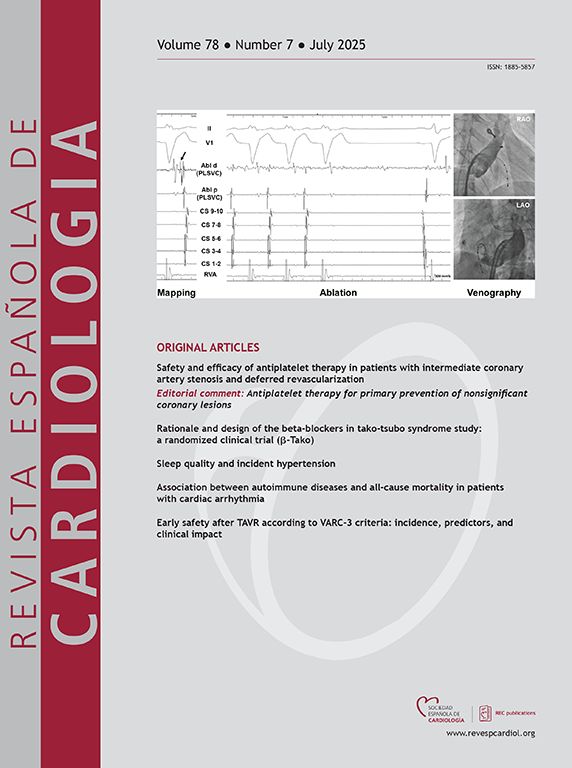Introduction and objectives: The tricuspid annulus (TA) in congenital heart diseases (CHD) may undergo significant changes in size, shape, and function due to hemodynamic overload. This study aimed to compare TA remodeling in children with CHD based on the type of right ventricle (RV) overload, using three-dimensional transthoracic echocardiography (3D-TTE).
Methods: This prospective case-control study included children with CHD who were divided into 2 groups based on the type of RV overload. Using 3D-TTE, we assessed the dimensions of the right chambers, the surface area, and the tenting volume of the TA, and analyzed the correlation among these measurements.
Results: Results: A total of 90 patients were enrolled: 30 with pretricuspid overload (atrial septal defect and partial anomalous pulmonary venous connection), 33 with posttricuspid overload (pulmonary regurgitation after RV outflow tract surgery), and 27 healthy controls. 3D TA surface area was larger in the pretricuspid group than in the posttricuspid group (median 6.60 cm²/m² vs 5.16 cm²/m²; P = .01) and was correlated with right atrial (RA) volume (P = .0001, r = 0.66) and RA surface area (P < .0001, r = 0.74) in the pretricuspid group. The tenting volume was greater in the posttricuspid group than in the control group. The 3D TA surface area and tenting volume were not correlated with RV end-diastolic volume.
Conclusions: 3D modeling of the TA using 3D-TTE is feasible and provides insights into TA remodeling in different RV overload conditions. RA volume and surface area are key determinants of TA size, which could have an impact on therapeutic strategies in patients with tricuspid regurgitation.
Keywords
Identify yourself
Not yet a subscriber to the journal?
Purchase access to the article
By purchasing the article, the PDF of the same can be downloaded
Price: 19,34 €
Phone for incidents
Monday to Friday from 9am to 6pm (GMT+1) except for the months of July and August, which will be from 9am to 3pm

